
 Photography by John Jackson
Photography by John Jackson Videography by Chad Lunsford
Videography by Chad Lunsfordt was September of 1968 and the end of an era for the first-gen Camaro was in sight. The 1969 Camaro would, in a matter of time, be the longest production run of any of the early Camaros. There were 243,085 1969 Camaros manufactured, making it the most produced of the first-gens.
“But that was then and this is now,” as the saying goes. Tim and Angie Wheeler are the very proud owners of this one-of-a-kind 1969 Camaro and are gratified with the work performed by the craftsmen under the watchful eye of Steve Cook at Steve Cook Creations (SCC), both located in Oklahoma. The team at SCC developed the style and performance by skillfully blending the fabrication, construction, body- and paintwork, wiring, and final assembly into a rolling piece of art. The SCC team was made up of Charles Collier, Ted Davis, Kevin Smith, Travis Cannon, Will Bailey, Alan Childers, Mike Cook, Kim Cook, and Steve himself.
1969 Camaro Reveals it All
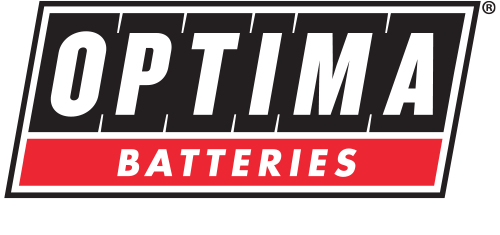

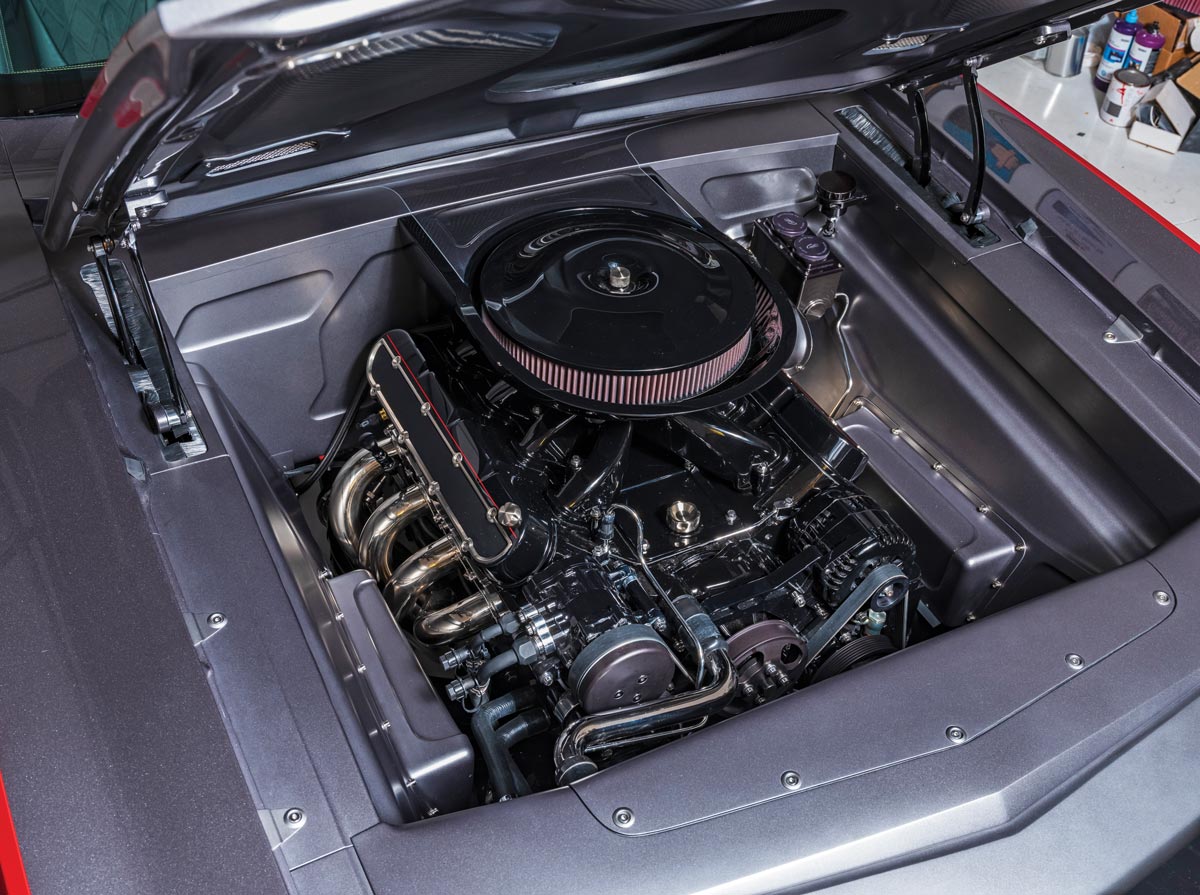
Providing the air/fuel mixture is a Holley Terminator EFI system, a Lokar throttle cable, a Holley fuel pump, Earl’s Performance Plumbing hardware, and an SCC fabricated dirt track–styled air cleaner with a K&N element. Following up is an MSD ignition, coil, and plug wires to fire the fuel delivered from the Tanks gas tank; an ATI harmonic balancer is also engaged. The spent gases exit via Detroit Speed & Engineering (DSE) stainless steel headers through 3-inch stainless tubing flowing rearward to and through a pair of MagnaFlow mufflers all buttoned up with Vibrant Performance exhaust clamps. The entire exhaust system is polished from the header plates to the tailpipe tips by the skillfully run buffers at Advanced Plating. Portions of the exhaust are wrapped with Design Engineering extreme temp material to prevent the body from damage caused by high heat. More engine accessories include the smoothed aluminum Edelbrock water pump, a 16-inch SPAL electric fan, a 175-amp Vintage Air alternator, a Powermaster starter, and a DHR engine oil cooler. What does all this get you? How about 621 rear-wheel horsepower fastened up to a TREMEC TKO 600 five-speed with a McLeod clutch inducing the power rearward to the prepped Strange 12-bolt Posi rearend supplied with 4.10 gears and axles. AMSOIL received the nod for the appropriate fluids, such as the engine, transmission, power steering, brake, and rearend.
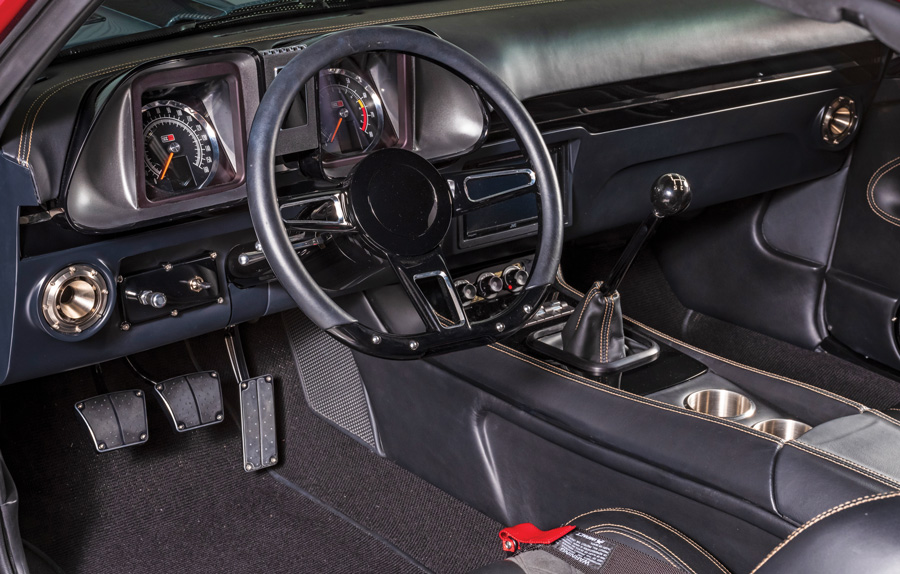
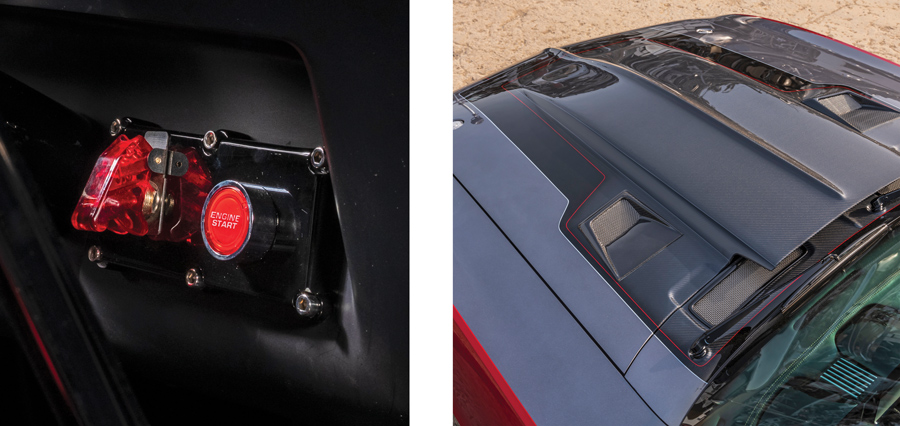
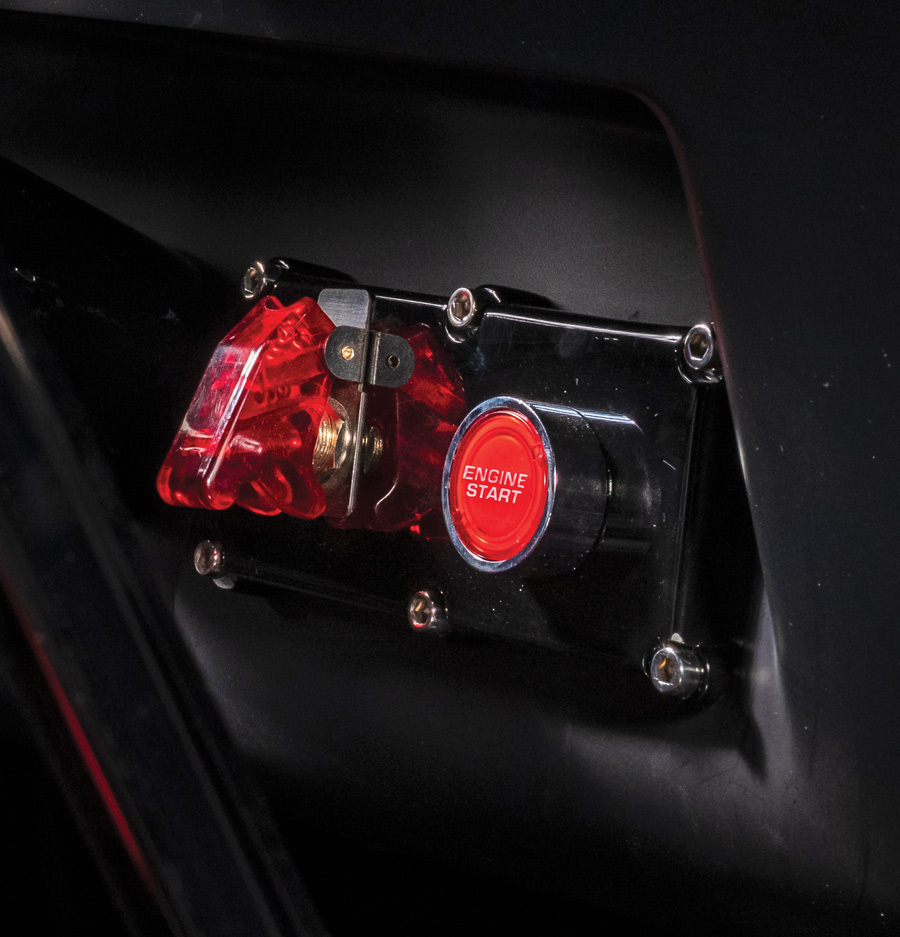
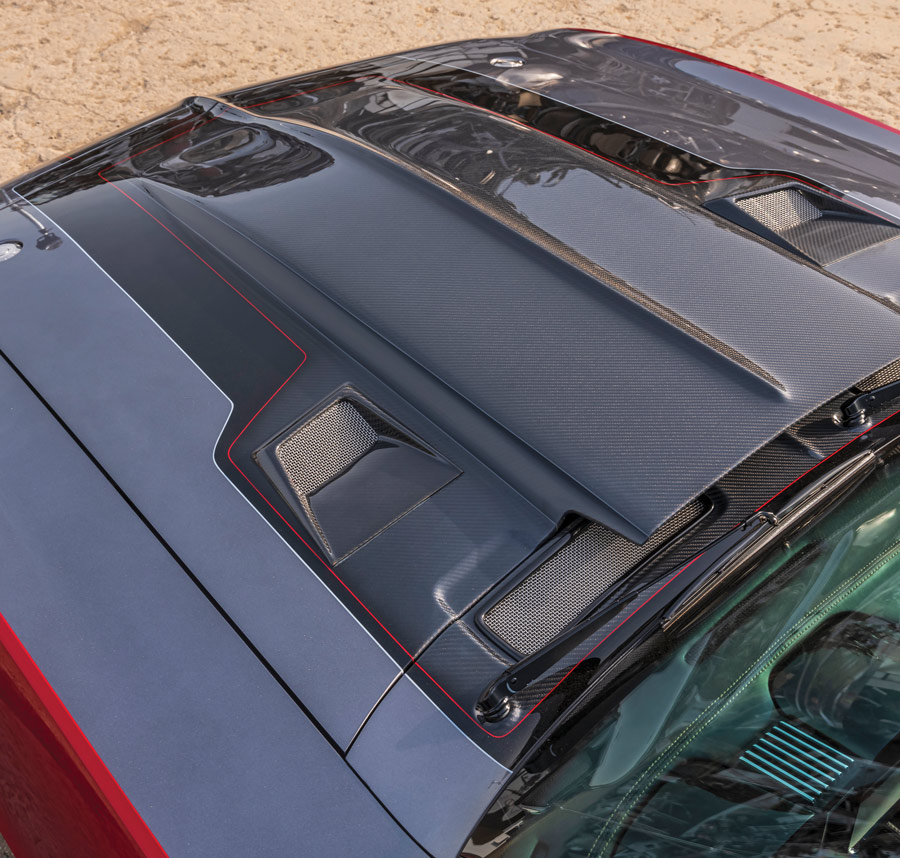
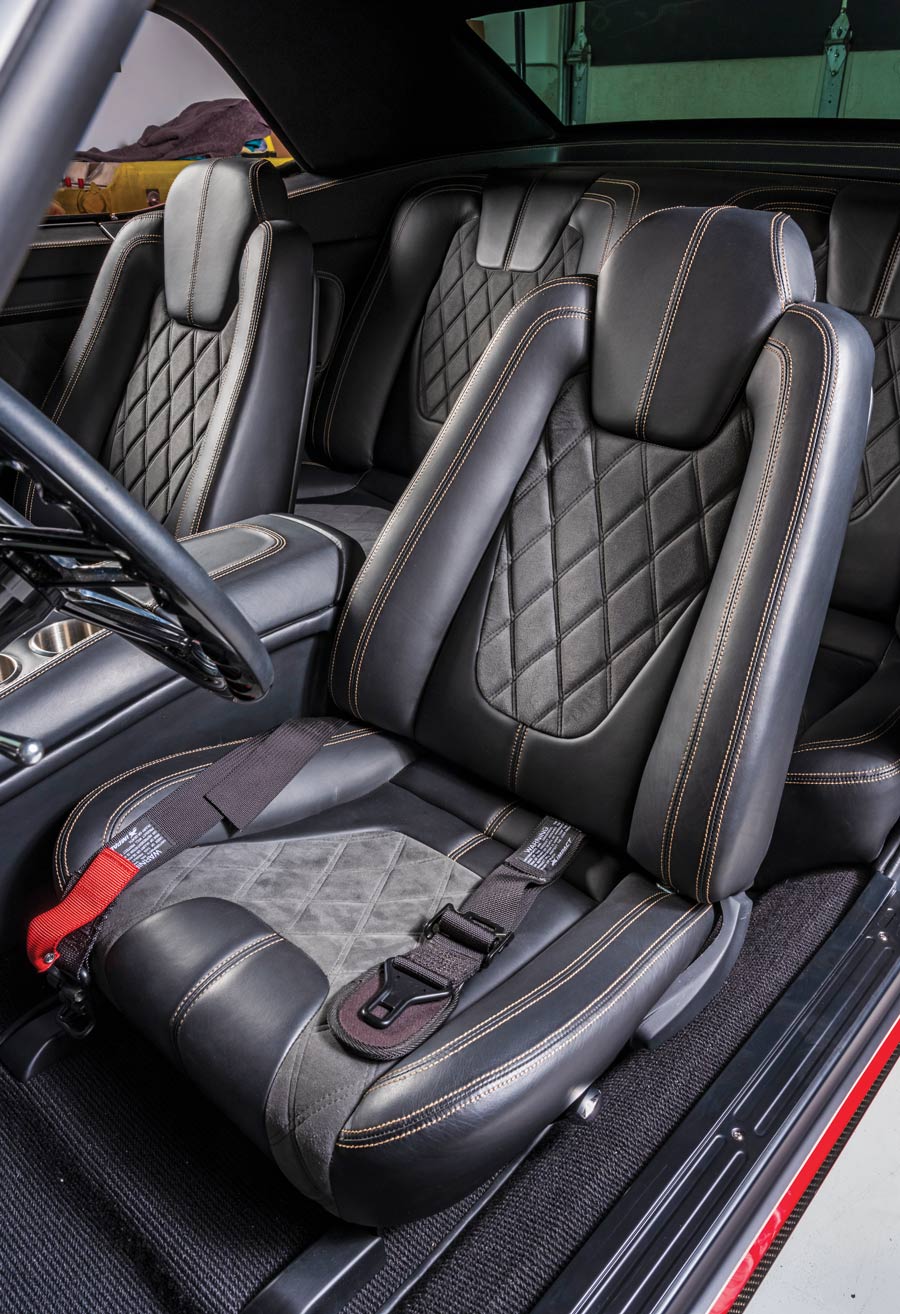

The 1969 Camaro was a one-year only design that featured new sheetmetal with the exception of the hood and trunklid. Delays at Fisher Body on the quarter-panel dies forced the 1970 Camaro to be late with its introduction so the 1969 was carried on through November. For “our” 1969 Camaro there are many, some obvious and some subtle, changes to the once-stock sheetmetal. Let’s start by looking at the windshield and backlight that are now flush mounted leading to tucked driprails. The rear bumper was flipped to match the contour of the front bumper and both were shaved and tucked to fit snugly to the body. The engine compartment and firewall were also reshaped while Steve fabricated the one-off aluminum grille that blends with the headlights. The carbon-fiber hood comes from Anvil Auto with extractor scoops embedded and is triggered by a pair of Billet Specialties hinges. Anvil Auto also received the nod for the carbon-fiber header and cowl panels, front and rear spoilers, and all were modified at the hands of the SCC crew. The front spoiler has the Marquez Design parking lamps moved outboard allowing for a fresh air scoop to rest in the middle, the space once occupied by a license plate. It rests just below the SCC custom aluminum grille and it and the bumpers are brushed nickel plated by Advanced Plating. The rear spoiler is frenched into the decklid while there are custom carbon-fiber side skirts (Childers came up with the idea while Steve and Ted Davis Enterprises made it happen) give the car an even lower ride appearance. If you look closely you will also note that the Marquez Design taillights mounted directly beneath the rear spoiler are also flush mounted on the body and this handiwork fittingly handled by Childers. In fact, all of the bodywork was handled at SCC by Childers—and that was no small feat. Steve loaded his spray gun and applied the Axalta primer then followed by with a tri-stage custom mix Candy Red Pearl. Additional color comes by way of charcoal and black panels with red and silver pinstripes.
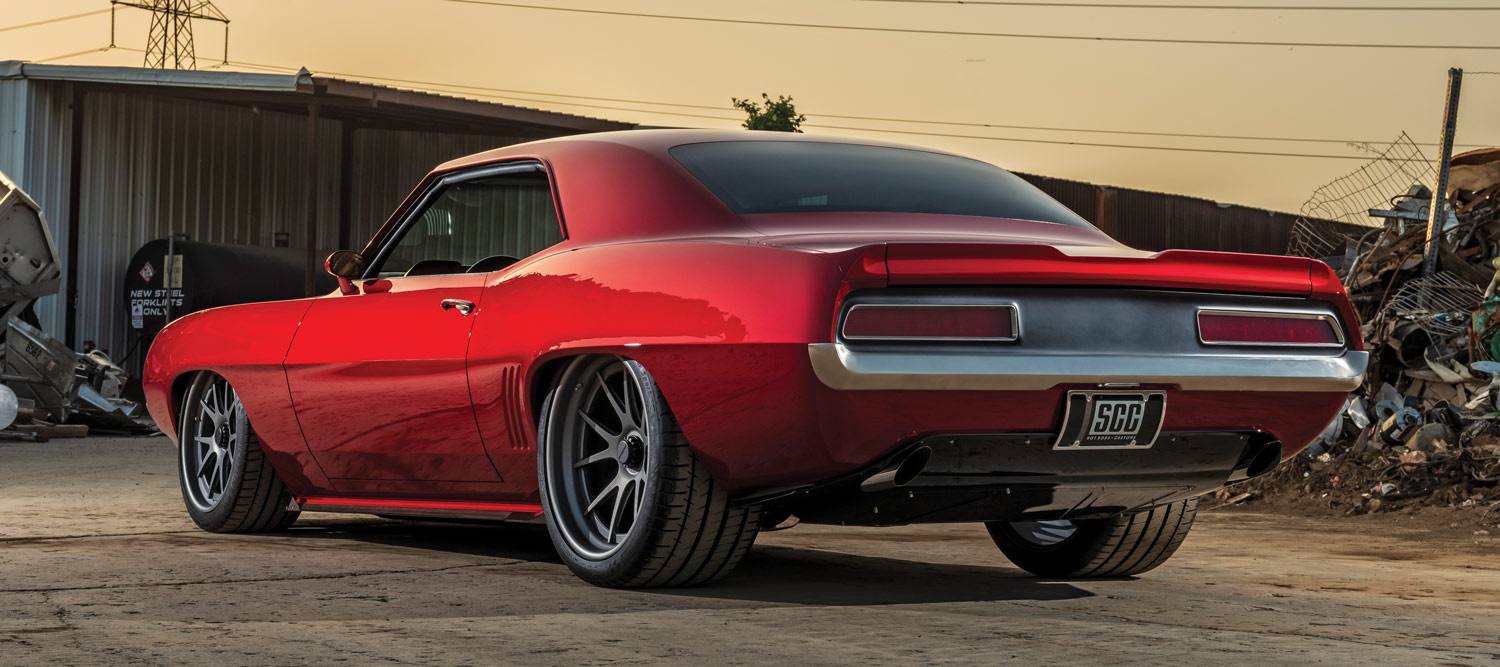
Well, there you have it. When it comes to the 1969 Camaro, one of the iconic hot rods of all time, this Bowtie belonging to Tim and Angie Wheeler was “built to perfection.”